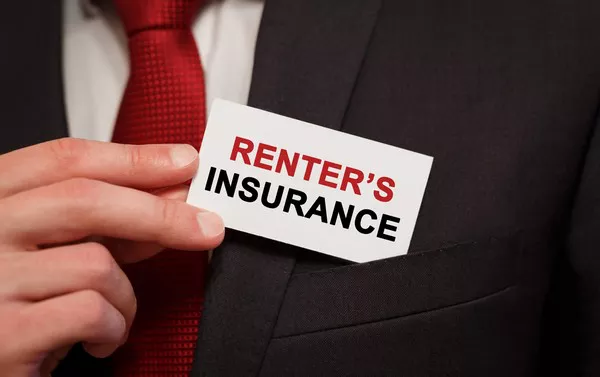Renters insurance offers crucial protection for tenants, safeguarding their personal belongings against a variety of perils such as theft, fire, vandalism, and more. However, to ensure adequate coverage, renters must accurately estimate the value of their possessions. In this article, we delve into the importance of personal property coverage, methods for estimating value, valuation approaches, useful tools and resources, documentation and proof of ownership, and additional considerations to help renters make informed decisions when securing renters insurance.
Importance of Personal Property Coverage
Personal property coverage is essential for renters as it shields them from financial losses resulting from unforeseen events. Without this coverage, renters would bear the full brunt of replacing or repairing damaged or stolen belongings out of pocket. Whether it’s a burglary, a fire, or a natural disaster, renters insurance provides peace of mind by ensuring that the cost of replacing or repairing personal property is covered, up to the policy’s limits.
This coverage protects against a wide range of perils, including theft, vandalism, fire, smoke damage, water damage from burst pipes, and even damage caused by aircraft or vehicles. In essence, renters insurance serves as a safety net, mitigating the financial risks associated with unexpected disasters or criminal activities.
Methods for Estimating Value
To accurately estimate the value of personal property for renters insurance, individuals should follow systematic approaches:
1. Inventory Creation:
Creating a detailed inventory of belongings is the cornerstone of accurately assessing their value. Start by systematically cataloging each item, including descriptions, purchase prices, and estimated current values. Be thorough and include everything from furniture and electronics to clothing and jewelry.
2. Categorization:
Organize items by room or type to streamline the inventory process. This categorization helps ensure that no item is overlooked and simplifies the valuation process when estimating the total value of belongings.
Valuation Approaches
When determining the value of personal property for renters insurance, two primary valuation approaches are commonly used:
1. Actual Cash Value (ACV):
ACV takes into account depreciation, meaning that the value of items is based on their current worth, considering factors such as age, wear and tear, and market value. Consequently, ACV payouts may be lower than the original purchase price, reflecting the item’s depreciated value at the time of loss.
2. Replacement Cost Value (RCV):
RCV, on the other hand, covers the cost of replacing damaged or stolen items with new ones of similar kind and quality, without factoring in depreciation. While RCV typically results in higher claim payouts compared to ACV, it may come with slightly higher premiums.
Tools and Resources
To streamline the estimation process, renters can leverage various tools and resources:
1. Home Inventory Apps/Software:
User-friendly apps or software make it easy to create and maintain a digital inventory of belongings. These tools often include features such as barcode scanning, photo uploads, and categorization options, simplifying the inventory process and ensuring that records are easily accessible when needed.
2. Depreciation Guides:
Resources or tips on estimating depreciation for different types of items can help renters accurately assess the value of their belongings. These guides often provide insights into typical depreciation rates for various categories of items, aiding in the valuation process.
3. Online Valuation Tools:
Some online tools specialize in valuing specific items such as jewelry, collectibles, or electronics. These tools utilize market data and other relevant factors to provide accurate estimates of an item’s current value, aiding renters in determining appropriate coverage limits.
Documentation and Proof of Ownership
Maintaining thorough documentation and proof of ownership is essential for expediting the claims process and ensuring fair compensation. Renters should:
- Keep receipts for major purchases, including electronics, appliances, and furniture.
- Obtain appraisals for high-value items such as jewelry, artwork, or antiques.
- Take photographs or videos of belongings, documenting their condition and demonstrating ownership.
By maintaining organized records, renters can streamline the claims process and provide compelling evidence of ownership in the event of a loss.
Reviewing and Updating Coverage
Renters should periodically review and update their personal property coverage to reflect any changes in their belongings. As individuals acquire new items or dispose of old ones, coverage needs may evolve. Regularly reassessing coverage ensures that renters maintain adequate protection for their possessions, avoiding potential gaps in coverage.
Additional Considerations
Several additional factors warrant consideration when estimating personal property value for renters insurance:
1. High-Value Items:
Renters with high-value items such as jewelry, art, or collectibles may require additional coverage or floater policies to adequately protect these assets. Standard renters insurance policies often have coverage limits for certain categories of items, necessitating supplemental coverage for valuable possessions.
2. Coverage Limits:
Understanding policy limits is crucial for ensuring adequate coverage. Renters should carefully review policy documents to determine coverage limits for personal property and assess whether additional endorsements or higher coverage limits are necessary to adequately protect their belongings.
Conclusion
In conclusion, estimating personal property value for renters insurance requires careful consideration and thorough documentation. By following systematic inventory creation, leveraging valuation approaches, utilizing tools and resources, maintaining documentation, and reviewing coverage regularly, renters can ensure that their belongings are adequately protected against unforeseen perils. Ultimately, renters insurance provides invaluable peace of mind, safeguarding against financial losses and enabling individuals to recover quickly from unexpected events.


